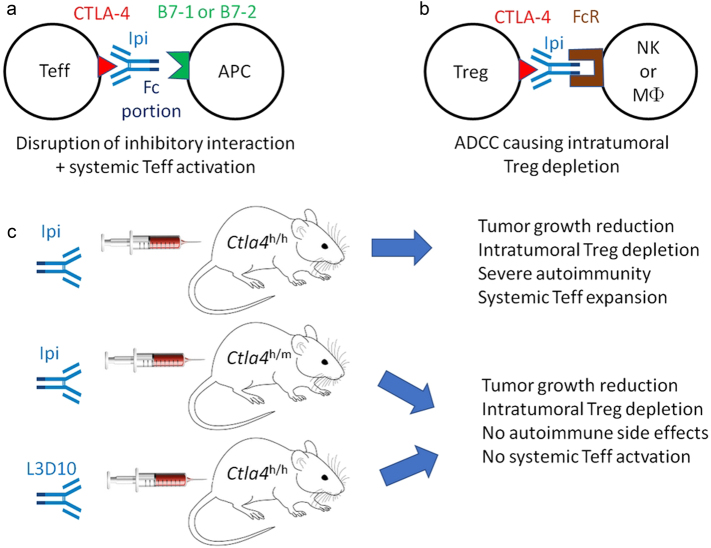Fig. 1.
Mechanisms of action of CTLA-4-targeting antibodies. a Traditional view suggesting that optimal antibodies must block the interaction between the co-inhibitory receptor CTLA-4 on effector T cells (Teff) and its ligand B7–1 or B7–2 expressed on APCs. b Alternative view suggesting that CTLA-4 antibodies must eliminate Tregs from the tumor bed by bridging CTLA-4 expressed on the Treg surface to Fc receptors on NK cells or macrophages (MΦ) to mediate ADCC. c Uncoupling efficacy and toxicity of ipilimumab in mouse models of cancer. When administered to mice with a fully ‘humanized’ Ctla4h/h genotype, ipilimumab combined with PD-1-specific antibodies induces autoimmune disease, but no such effect is detected in heterozygous Ctla4h/m mice. In contrast, ipilimumab has similar anticancer effects against tumors implanted in Ctla4h/h and Ctla4h/m mice. Moreover, alternative anti-CTLA4 antibodies may mediate reduced pro-autoimmune effects yet have similar anticancer efficacy. Note that the effects shown in c are particularly strong when anti-CTLA4 antibodies are combined with antibodies targeting PD-1

